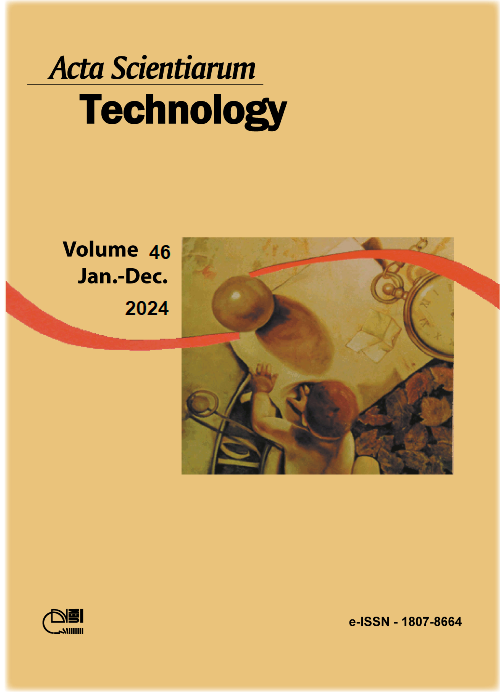Use of Ora-pro-nóbis (Pereskia aculeata Miller) mucilage as a wall material in microencapsulation by complex coacervation
DOI:
https://doi.org/10.4025/actascitechnol.v46i1.64375Palavras-chave:
Non-conventional food plant (NCFPs); carotenoids; chlorophyll; antioxidant activity; encapsulation.Resumo
Innovative materials for the encapsulation of bioactive compounds are a permanent challenge. In this sense, the purpose of the study was to evaluate the use of Ora-pro-nobis mucilage (MOPN) as a wall material to replace Arabic gum (AG), in microencapsulation by complex coacervation of bocaiuva (Acrocomia aculeata) pulp oil. The MOPN was obtained from green leaves, and the pH, color, water activity, humidity, fixed mineral residue, proteins, lipids, and extraction effectiveness were determined. MOPN was employed as a partial or total replacement of AG in the microencapsulation of bocaiuva pulp oil. Dehydrated and wet mucilages were used to emulsion formation. The interaction between biopolymers, the effectiveness, efficiency of microencapsulation, and the morphological characteristics of microcapsules were confirmed. In addition, the bioactive compounds (chlorophyll and β-carotene) and antioxidant activity were evaluated. The microcapsules were produced using moist mucilage. Microcapsules obtained with AG/gelatin/ bocaiuva oil were considered as control samples. MOPN showed brown color and chlorophyll content of 72.44±5.74 mg 100 g-1. The interaction between AG and MOPN in microcapsule formation was proven for the formulations with 25 and 50% MOPN substitution. The effectiveness was 74.83 and 75.22%, and encapsulation efficiency was 79.18 and 74.59%, respectively, verified through optical micrograph. In addition, the microcapsules with 25 and 50% MOPN as wall material showed three times more antioxidant activity against ABTS, and two times more β-carotene compared to the control microcapsule.
Downloads
Downloads
Publicado
Como Citar
Edição
Seção
Licença
DECLARAÇíO DE ORIGINALIDADE E DIREITOS AUTORAIS
Declaro que o presente artigo é original, não tendo sido submetido í publicação em qualquer outro periódico nacional ou internacional, quer seja em parte ou em sua totalidade.
Os direitos autorais pertencem exclusivamente aos autores. Os direitos de licenciamento utilizados pelo periódico é a licença Creative Commons Attribution 4.0 (CC BY 4.0): são permitidos o compartilhamento (cópia e distribuição do material em qualqer meio ou formato) e adaptação (remix, transformação e criação de material a partir do conteúdo assim licenciado para quaisquer fins, inclusive comerciais.
Recomenda-se a leitura desse link para maiores informações sobre o tema: fornecimento de créditos e referências de forma correta, entre outros detalhes cruciais para uso adequado do material licenciado.



















